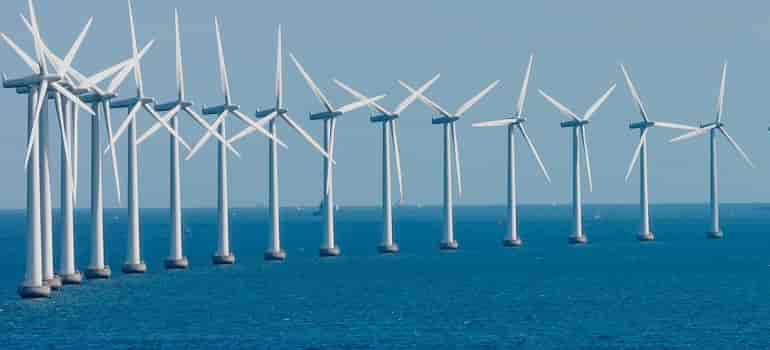
The US offshore wind industry is set to power up over the coming decade. New research from Wood Mackenzie shows that as the sector ramps up from near-zero today, it could deliver as much as 25 gigawatts (GW) in 2029, capturing almost half of the US market for new wind power installations.
However, a number of uncertainties remain, including project timing.
Max Cohen, principal analyst and author of Wood Mackenzie’s US Offshore Wind Outlook 2020-2029, said: “While more than 9 GW of projects are already contracted or soon to be approved, and up to 6 GW more will be solicited through 2022, longer-term uncertainty could see total build this decade reach just 15 GW.”
Growth potential
He said that permitting delays and political risk at both the state and federal level may hamper the sector’s long-term outlook, despite state moves to increase mandates and contract large projects.
However, expanding state renewable portfolio standard (RPS) carveouts and contracting calls for the installation of 34 GW of capacity by 2035 mean there is potential for growth.
Cohen said: “The US federal government’s lease program currently supports about 20 to 30 GW, depending on turbine density, and areas supporting as much as 45 GW are under consideration for future leasing.”
This more optimistic 34 GW scenario would bring its own challenges, particularly integrating so much offshore wind to a constrained onshore transmission grid. “Recent large-scale renewable energy-focused transmission projects have failed to move forward due to a combination of permit delays, NIMBYism and high network upgrade costs,” Cohen added.
Despite the uncertainty, East Coast states have pushed ahead with solicitations and policy expansions, helping position the US as an attractive emerging market for global players, Cohen said.
Wood Mackenzie expects that almost 25 GW of offshore wind capacity will be added in the US from 2020-2029. States have already selected 9 GW of capacity, accounting for more than 70% of forecast build through to 2026. And in New England and New York, 80% of wind build over this period will be located offshore.
Opportunities
He added: “The US offers an opportunity for experienced European players and oil and gas producers, as well as domestic utilities and supply chain providers, as policymakers seek to boost employment.”
Cohen said that while federal tax credits and permitting schedules define near-term build, the commercialization of floating technology is critical to expanding offshore wind’s regional reach to key 100% RPS markets such as California and Hawaii.
He noted that with more than 39 GW of thermal plants due to be retired, and state renewable power generation targets, opportunities exist for offshore wind.
“Offshore wind can be deployed on a large scale, making it a powerful tool for policymakers to pursue more ambitious clean energy targets,” Cohen said.
The offshore wind sector will effectively launch in 2023, when the 800 MW Vineyard Wind project will come online to supply Massachusetts customers, along with about 260 MW of smaller projects supplying New York, Maryland, and Maine. In 2024, offshore wind will comprise over a third of the year’s wind capacity installations, increasing to close or even half of the wind build in each subsequent year to 2029.
Cohen said offshore wind’s rapid expansion in market share is partly due to the expiration of the federal Production Tax Credit. This will see onshore installations dropping from an estimated 14 GW in 2021 to a typical level of under 5 GW per year later in the decade.
The phasing-out of the federal Investment Tax Credit (ITC) adds some uncertainty to the offshore sector’s outlook, as there are concerns that price declines, driven by technology and economies of scale, may not be sustainable.
Cohen said: “The first few commercial-scale projects contracted in 2017 have prices in the $150-$170 per MWh range (levelized, 2019$).
“Vineyard Wind and Revolution Wind shocked with levelized 2019$ prices in the $65-80/MWh range. This substantial drop made the technology viable as a route to decarbonizing the Northeast’s power grid, and encouraged policymakers across the region to increase mandates.
“These low prices are made possible by the latest in offshore wind turbine technology, as well as the continued availability of the ITC. It remains to be seen if technology improvements and economies of scale can outweigh the rise in required prices the phase-out will bring.”

